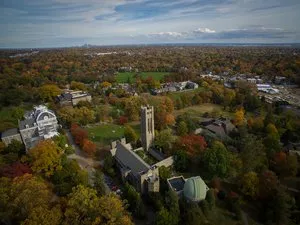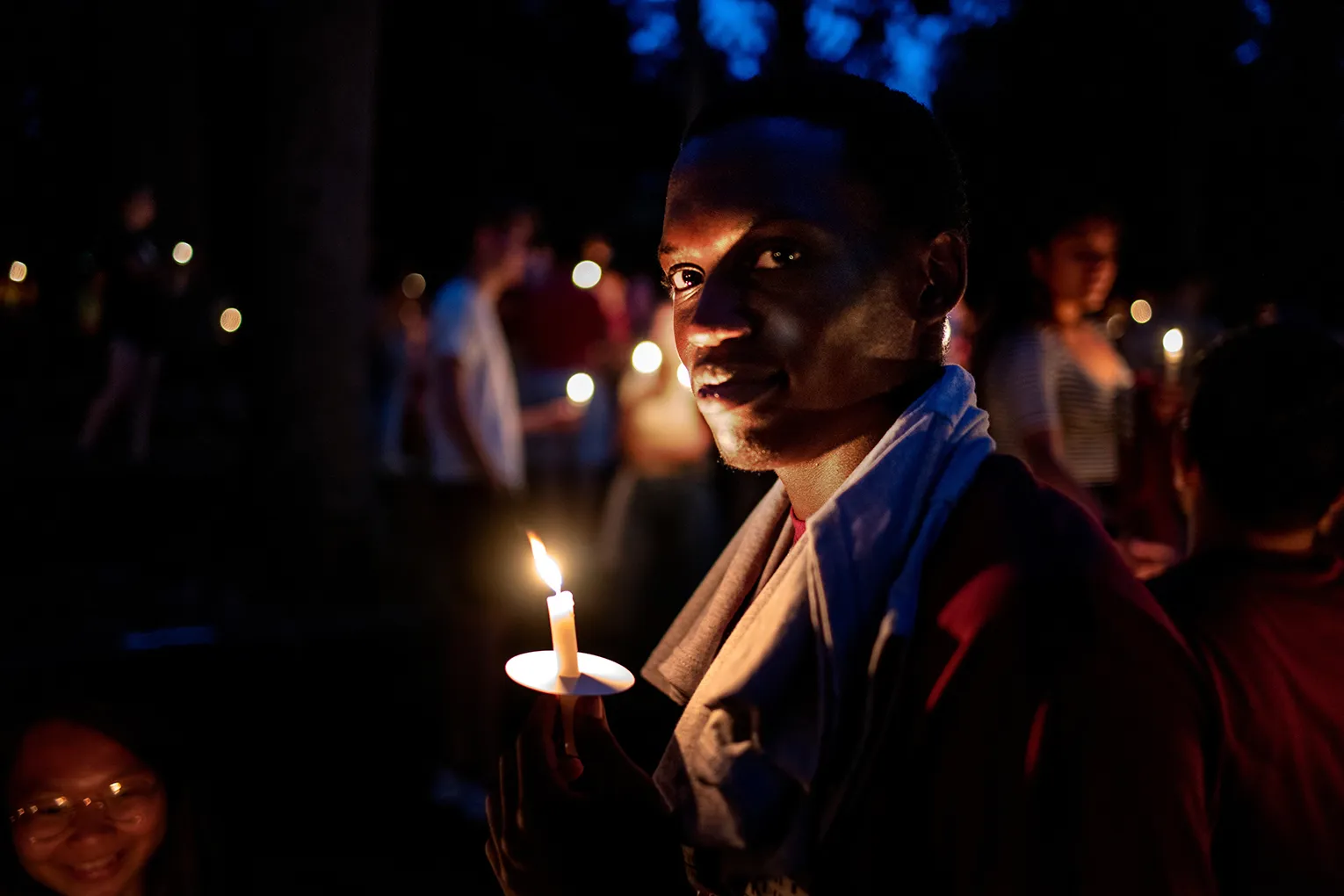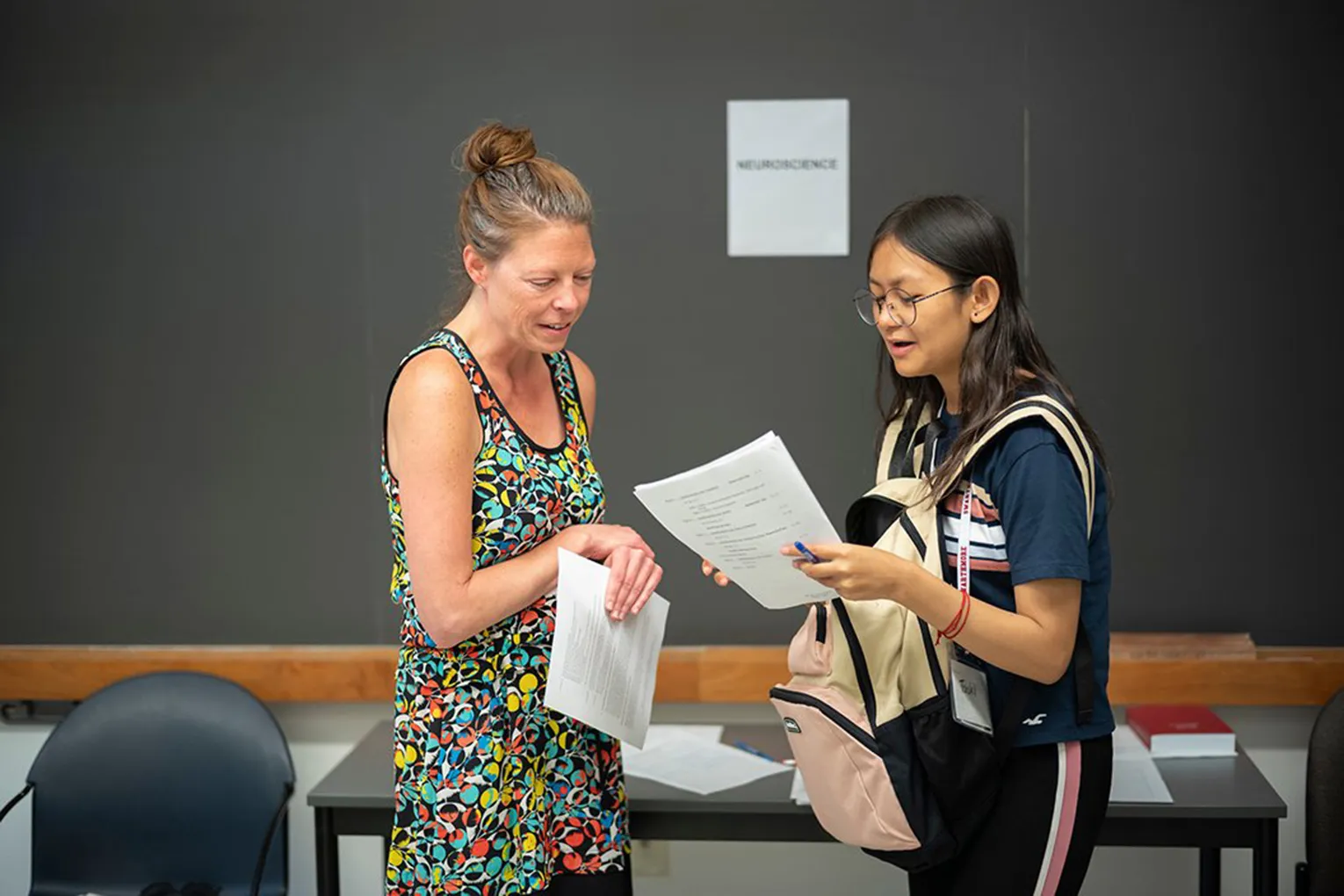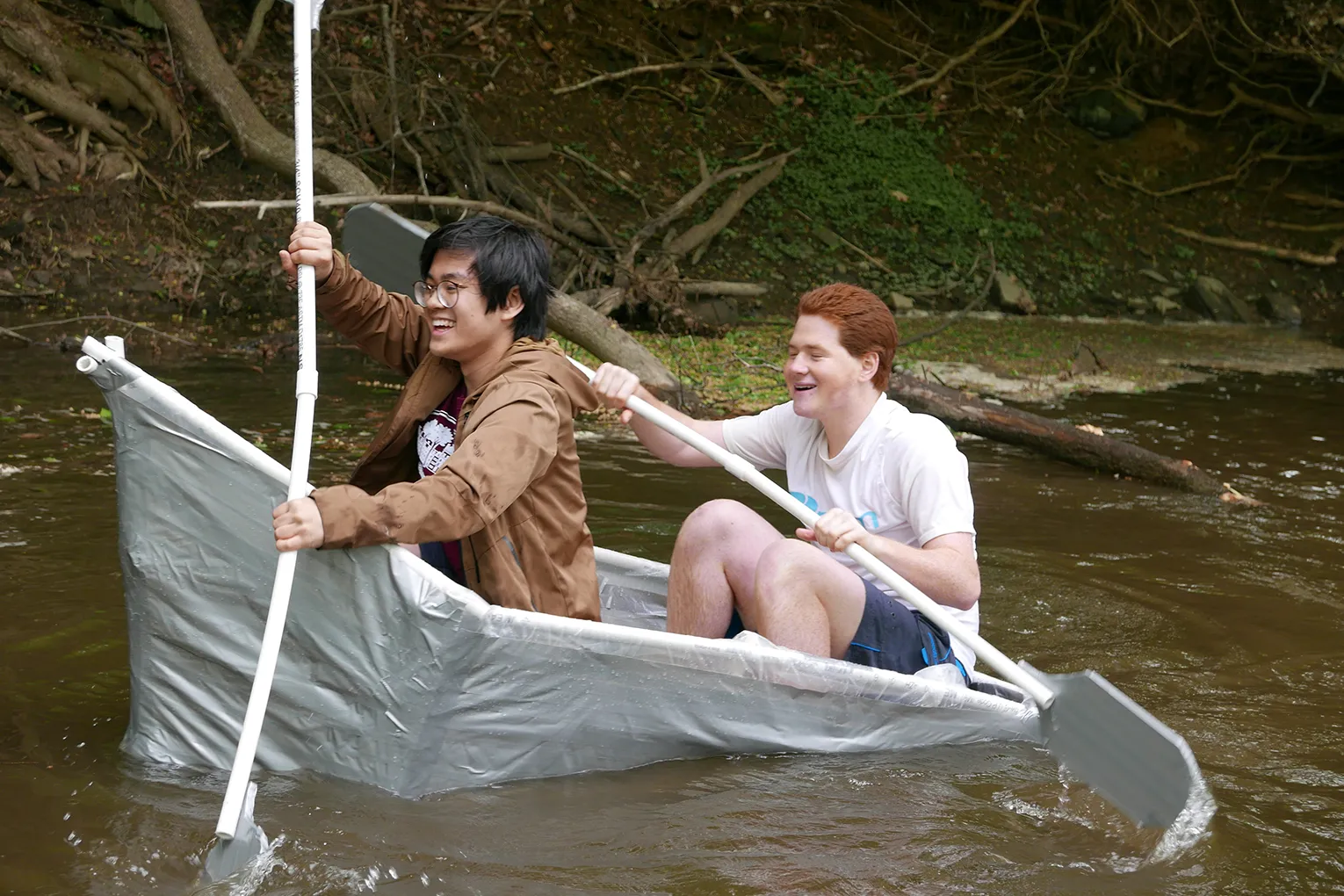Sculpture Concentration
Art Program: Concentration in Sculpture
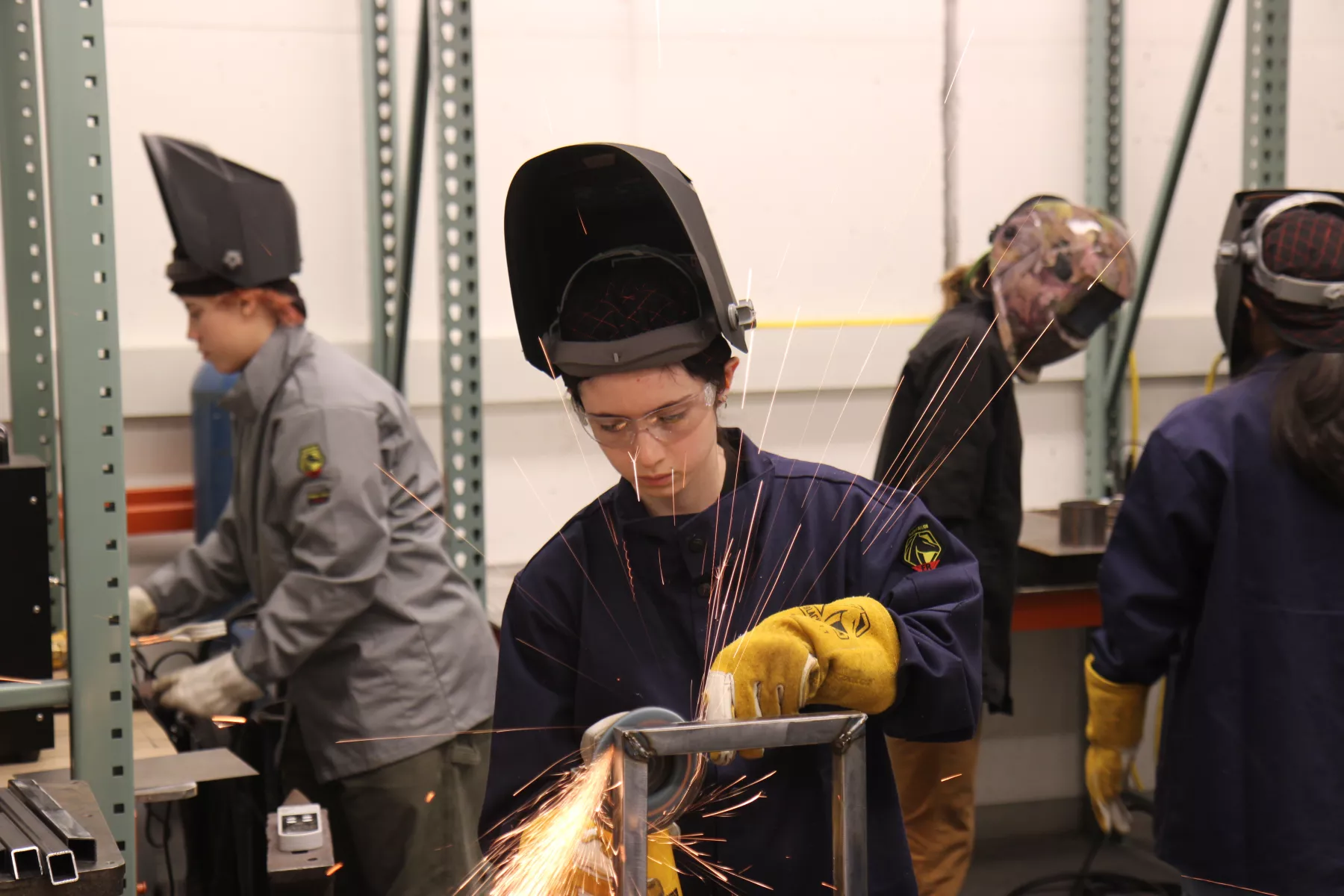
Assistant Professor Jody Joyner during a Sculpture I class demonstration.
Explore the course offerings for Sculpture below:
ARTT 005A. Sculpture I: Form, Material, Process
This course serves as an introduction to the foundational materials, techniques, and concepts associated with sculpture. Sculpture I emphasizes the development of skills in wood, steel, and introductory mold-making/casting techniques through a series of hands-on demos and exercises that culminate in creative studio projects. This class also foregrounds creative process, introducing students to the expression of sculptural ideas through iterative studio practice. Each major course project will involve brainstorming, drafting, mocking-up, working, and re-working sculptural objects. We will approach form-making as a language in and of itself, one which demands 3D thinking and making and the development of hands-on, embodied knowledge. Sculpture I prepares students to move onto a variety of Sculpture II courses, where individual concepts and technical skills can be further honed and applied to specific topics in contemporary sculpture. While emphasis falls on introductory techniques in wood, metal, and casting, we will engage a spectrum of finding and making. Students will often be invited to incorporate everyday materials and found objects in relationship to foundational sculptural concepts. Studio projects will be complemented by field trips, visiting artists, readings, films, and slide presentations, all aimed at developing diverse, nuanced contexts for contemporary sculpture.
ARTT 054C. Sculpture II: Sculpture and the Environment
Sculpture and the Enviornment is a studio-based inquiry into conetmporary sculpture and three-dimensional art practices that engage in enviornmental issues. Through a series of hands-on creative projects, we will consider how visual art can be a tool for envisioning a more sustainable and enviornmentally just future. Each major studio project will focus on a specific strategy for engaging enviornmental content in three-dimensional artworks. We will often respond to a particular landscape, considering how an artwork reolates both formally and conceptually to the site. We will develop an ethos of working with primarily salvaged, recycled, and reclaimed materials. Within those constraints, you will have a great deal of agency to choose what materials you would like to work with for each project. You will also be invited to bring knowledge from other EVS courses/relevant disciplines to bear on your creative work. To build context for our work, we will look at a variety of individuals and groups across time, speace, and cultures who have made land and place-based artwork. Studio projects will be informed by visiting artists, slide presentations, readings and films/videos. Creative practices that foreground community, land, agriculture and ecology will be emphasized. This course will collaborate with RAIR (Recycled Artists in Residence) in Philadelphia, Swarthmore's Office and Sustainability, and the Scott Arboretum. We will use the MakerSpace in Whittier Hall as a resource for prototyping and fabrication. You will receive in-depth, frequent feedback on your work through full class critiques, small group discussions, and 1:1 meetings.
ARTT 054D. Sculpture II: Installation Art
Installation Art is a studio-based inquiry into the fundamental concepts, visual elements, critical language, and fabrication processes relevant to the creation of contemporary installations. Installation Art is a porous term used to describe mixed-media artworks designed for a specific space or for a temporary amount of time. Installation has been a prevalent mode of expression within contemporary art since the 1960s, and today is more often a strategy for articulating a particular set of ideas than an all-encompassing genre. Throughout the course, students will explore how they might respond to aspects of their physical surroundings and the built environment through installation. This course will begin with a series of studies, in which students practice their capacity to think both spatially and temporally– beyond the making of discrete objects. These initial studies will each trace a specific line of thinking and making within installation practices, such as spatial drawing, light and space, and video projection, and will build towards an expanded installation made by students on campus. The culminating course project will be a mock open call in which the class works in small groups to propose a sculptural installation for a specific local context (i.e., a nearby museum, a public space, etc.).
ARTT 054E. Sculpture II: METAL
This course will focus on a variety of methods for working with metal in contemporary sculpture. Students will first move through a series of demos specifically designed for learning to cut, bend, weld, shape, and finish steel. The class will work on short-term technical exercises, meant to develop skills introduced in demos and build confidence on a variety of metal shop machines. Following this initial skill-building, students will embark on longer term sculpture projects in metal. Cumulatively, there will be a great deal of hands-on, experiential learning. Studio work will be complimented by group critiques, visiting artists, and a field trip.
ARTT 054f. Sculpture II: CASTING
This course will explore a variety of different casting methods, techniques, and concepts. Students will learn techniques for making one- and two-part molds and will be encouraged to work from both found objects and sculpted forms. Over time students' molds will become more complex and intricate. The class will also experiment with life casting; algisafe will serve as our initial material. Over the course of the semester students will have the opportunity to explore a range of materials. This course will include a field trip to a foundry and an introduction to the process of metal casting.
ARTT059B. Sculpture III: Advanced Sculpture
This upper-level studio course will focus on the development of advanced techniques, independent concepts, and the ability to frame studio work within the vast landscape of contemporary sculptural production. Sculpture III will structure and scaffold students’ transition from assignment-based making to an independently motivated sculpture practice. Students will learn how to conduct their own creative and material research. The class will begin with weekly exercises and research to develop ideas, building towards a long-term, independent project in sculpture. Class critiques will be critical to the development of students’ trajectories and growth over the course of the semester. Demos offered will be based on students’ interests, but could include joinery, wood bending, CNC, welding, and mold-making techniques more advanced than the technical skills offered at the Sculpture I and Sculpture II levels.
SENIOR CAPSTONE
The Senior Capstone is the culminating credit of your concentration in the Art major. The permanent faculty share the responsibility of mentoring you for this credit and will divide up the majors equally among themselves. It is not necessary and may not be possible to work with a faculty member from your chosen concentration. The Senior Capstone is designed to strengthen critical, theoretical and practical skills related to your studio practice. The success of your experience in a large part will be due to how you handle the level of independence. You will be responsible for structuring your studio time, maintaining a supply budget and coordinating meetings with your faculty mentor. The faculty mentor will guide and assess the development of work. You may reach out to other faculty to seek feedback during their scheduled office hours but your primary mentor will be appointed from the faculty. The Senior Capstone culminates in a curated group exhibition in the List Gallery. As was the case in the fall semester, you will have your own studio space in Whittier Hall.
